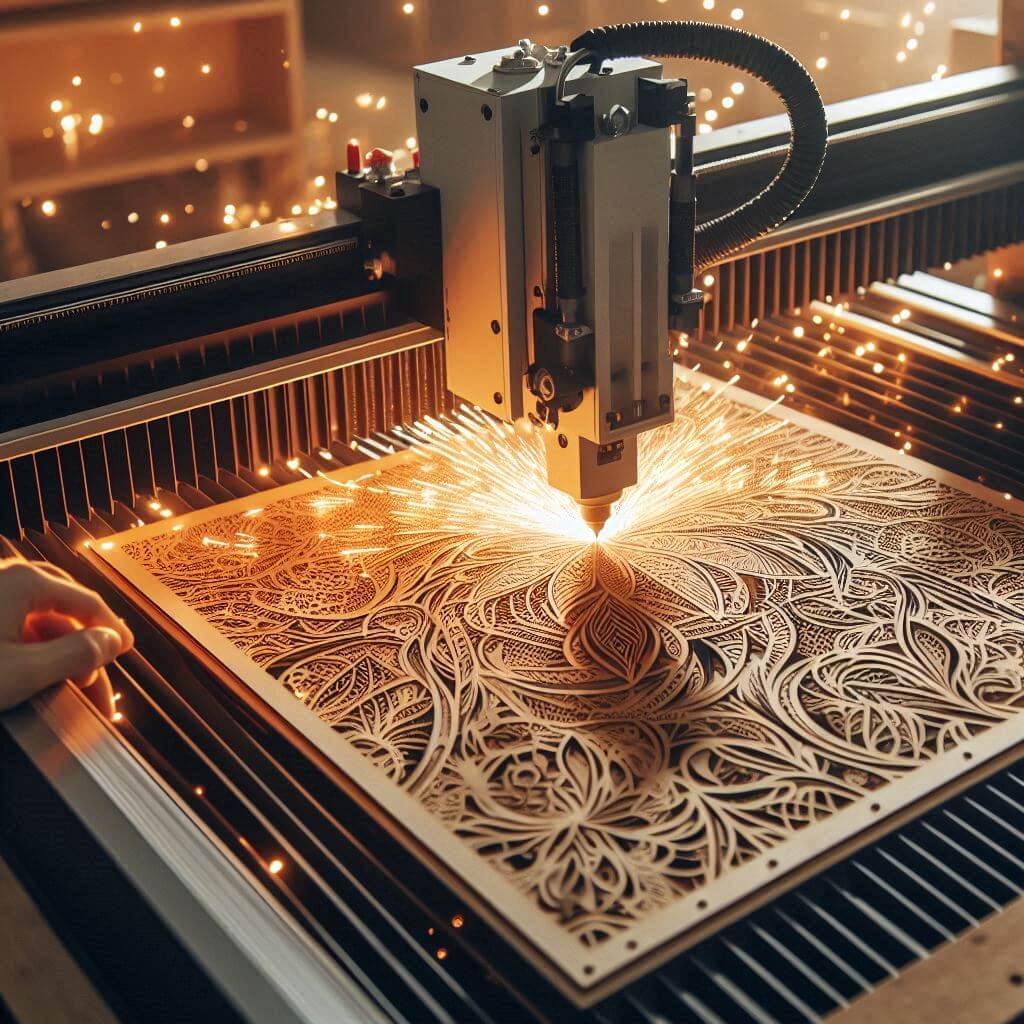Steel
Steel stands as the backbone of numerous industries, revered for its exceptional strength, durability, and versatility. Among the array of metals available for laser cutting projects, steel often takes center stage due to its wide-ranging applications and reliability.
In laser cutting, steel’s resilience shines, allowing for precise cutting of intricate designs and complex shapes with ease. This makes it a preferred choice for fabricating structural components, machinery parts, and industrial equipment. From automotive chassis to intricate gears, steel’s robustness ensures that the final products withstand demanding operational conditions.
Beyond its mechanical properties, steel’s affordability makes it an attractive option for businesses looking to optimize production costs without compromising on quality. Its availability in various grades and thicknesses provides flexibility to cater to diverse project requirements, from light-duty applications to heavy-duty machinery. 
Steel’s compatibility with different surface finishes and coatings enhances its aesthetic appeal and functional performance. Steel can be tailored to meet specific design and performance criteria.
Steel’s versatility, durability, and cost-effectiveness make it a go-to metal for laser cutting projects across industries. From manufacturing robust machinery components to crafting intricate artistic creations, steel continues to play a vital role in driving innovation and progress in various sectors.
Aluminum
Aluminum, renowned for its lightweight yet sturdy nature, stands as a prominent choice in laser cutting projects, offering a blend of versatility and performance. Its unique combination of properties makes it an ideal material for a wide range of applications across industries.
In laser cutting, aluminum’s excellent thermal conductivity and reflectivity properties enable precise and efficient cutting, even at high speeds. This makes it particularly well-suited for applications requiring intricate designs and fine details, such as aerospace components, electronic enclosures, and decorative panels.
One of aluminum’s key advantages is its corrosion resistance, which makes it suitable for outdoor and marine applications where exposure to moisture and harsh environments is a concern. This property, coupled with its lightweight nature, makes aluminum an ideal choice for manufacturing automotive parts, marine equipment, and architectural elements.
Aluminum’s ability to be easily formed, welded, and finished allows for greater design flexibility and customization options. Aluminum’s malleability and adaptability make it a versatile material for laser cutting projects.
From enhancing fuel efficiency in transportation vehicles to improving energy efficiency in building materials, aluminum’s lightweight and sustainable attributes continue to drive its widespread adoption across various industries. As technologies evolve and demand for lightweight, high-performance materials grows, aluminum remains a top contender for innovative laser cutting applications.
Stainless Steel
Stainless steel, renowned for its durability, corrosion resistance, and aesthetic appeal, is a versatile material widely used in laser cutting projects across industries. Its unique properties make it suitable for a diverse range of applications, from architectural accents to precision machinery components.
In laser cutting, stainless steel’s high melting point and excellent thermal conductivity enable efficient and precise cutting, resulting in clean, burr-free edges. This makes it particularly well-suited for applications where tight tolerances and high-quality finishes are essential, such as medical devices, kitchen appliances, and decorative signage.
One of stainless steel’s key advantages is its corrosion resistance, which is due to the presence of chromium in its composition. This property makes it ideal for applications requiring exposure to moisture, chemicals, and harsh environmental conditions, such as outdoor structures, marine equipment, and industrial machinery.
Stainless steel offers exceptional strength-to-weight ratio, making it suitable for applications where structural integrity is necessary. From structural components in architectural designs to specialized equipment in the food processing industry, stainless steel’s strength and durability ensure long-lasting performance in demanding environments.
Stainless steel is available in various grades and finishes, allowing for customization to meet specific project requirements. Stainless steel offers versatility and flexibility in laser cutting projects.
As industries continue to demand materials that offer superior performance, longevity, and aesthetics, stainless steel remains a top choice for laser cutting projects seeking durability, corrosion resistance, and design versatility. Its enduring popularity underscores its status as a preferred material for a wide range of applications across diverse industries.
Brass
Brass, a copper-zinc alloy renowned for its attractive golden hue and excellent machinability, is a popular material choice for laser cutting projects due to its unique combination of properties and aesthetic appeal. From decorative accents to functional components, brass offers versatility and aesthetic value in a variety of applications across industries.
In laser cutting, brass exhibits favorable cutting characteristics, including good thermal conductivity and low melting point, which allow for efficient and precise cutting with minimal heat distortion. This enables the creation of intricate and detailed designs with clean edges and smooth finishes, making brass an ideal choice for decorative ornaments, signage, and architectural features.
One of the key advantages of brass is its corrosion resistance, which makes it suitable for both indoor and outdoor applications. Brass maintains its lustrous appearance over time with minimal maintenance, making it a durable and long-lasting material choice for laser cutting projects.
Brass offers excellent machinability, allowing for easy fabrication of complex shapes and intricate patterns. Its malleability and ductility make it well-suited for forming and shaping processes, enabling designers to realize their creative visions with precision and ease.
Beyond its functional properties, brass’s warm, golden color adds a touch of elegance and sophistication to any project. From jewelry and fashion accessories to architectural hardware and musical instruments, brass’s aesthetic appeal enhances the visual impact of laser-cut designs, making them stand out in various applications.
Brass is a sustainable material choice, as it is highly recyclable and can be reused indefinitely without compromising its properties. This eco-friendly aspect makes brass a preferred option for environmentally conscious projects seeking to minimize their carbon footprint and promote sustainability.
Overall, brass’s combination of aesthetic appeal, durability, machinability, and sustainability makes it a top choice for laser cutting projects across industries. Its versatility and timeless elegance ensure that brass will continue to be a preferred material for a wide range of applications, from artistic creations to functional components, in the years to come.
